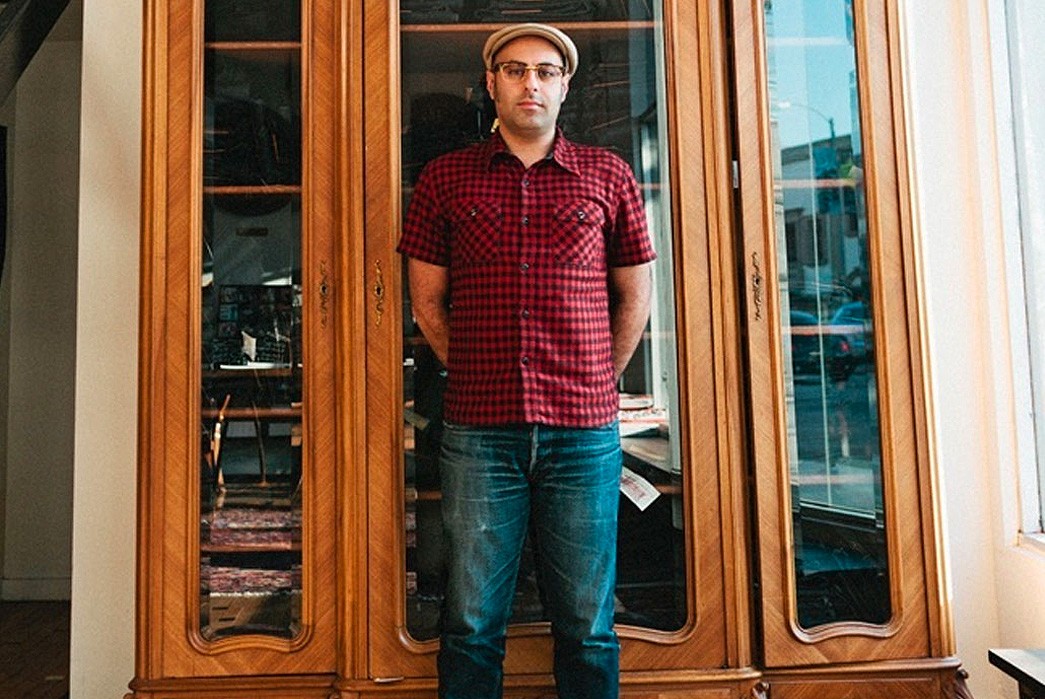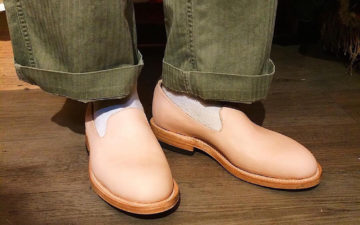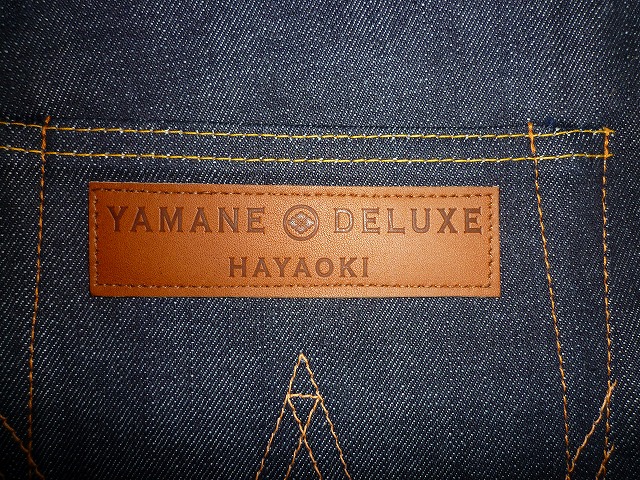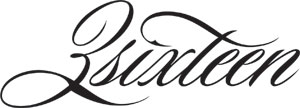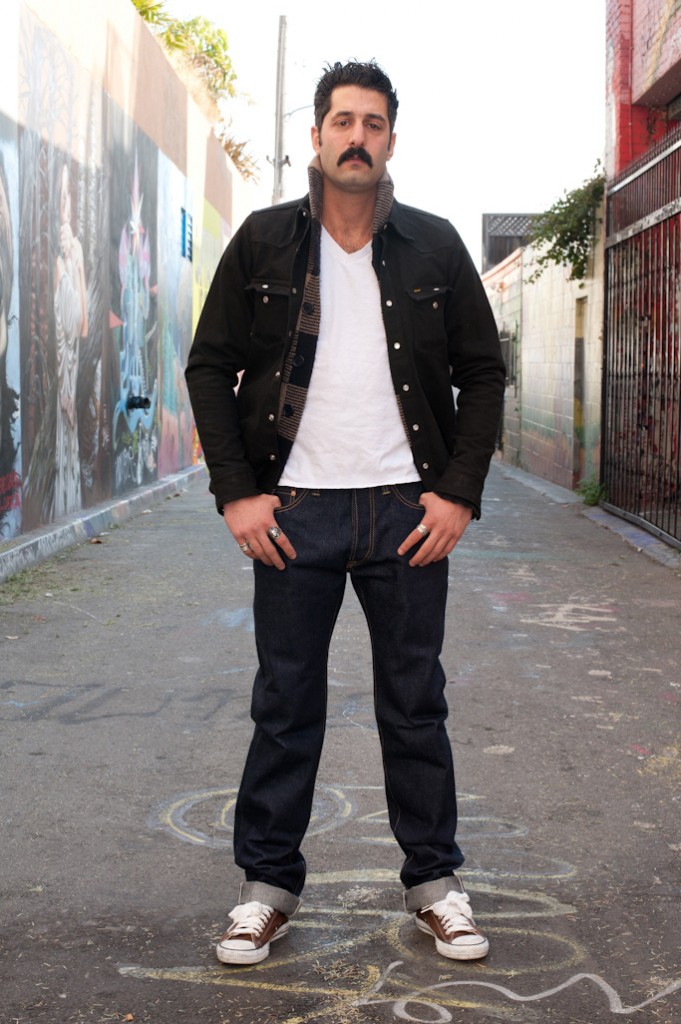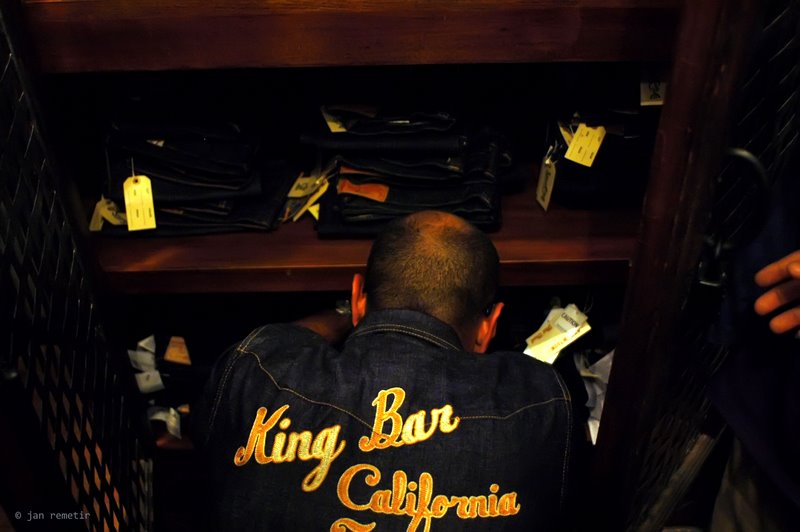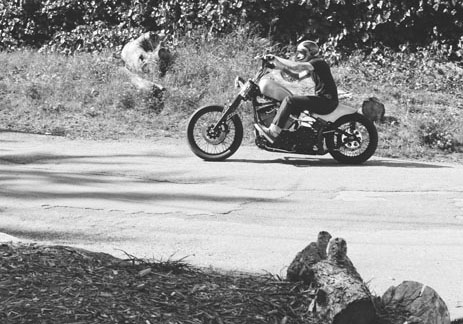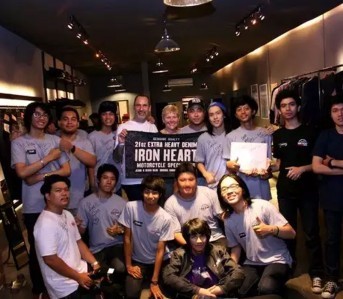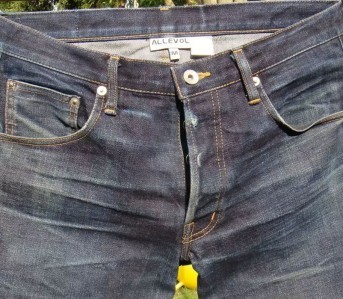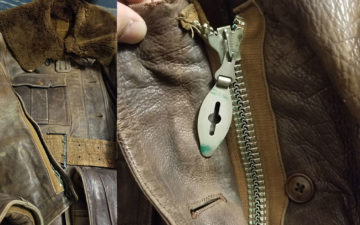If you spend enough time researching or hunting for that perfect pair of raw denim online, you are almost certain to come across denim purveyor, Self Edge, and its co-owner, Kiya Babzani.
Not only does Self Edge specialize in some of the world’s finest denim (in addition to producing its own self-titled line), but Babzani is also one of the most active and accessible users on various message boards.
However, how well do you know the man behind-the-scenes? How did he become so involved in raw denim? Any guess on what his “Plan B” might too? Read on for more details.
Though I know your interest for raw denim lies within your passion for Rockabilly, is there anything else about raw denim that specifically appeals to you?
I love the “every man” aspect of denim in general, how it appeals to all social classes and cultures. It’s transcended it’s original purpose to the point of which most people today don’t know or care where it came from originally. I think that’s when a fabric or garment becomes truly successful.
That’s true, it is one garment that is arguably the lowest common denominator between all people. Any memories from when you first stumbled upon denim?
I first saw raw denim in the rockabilly scene about fifteen years ago. It was something I never even considered before that. Thinking, “Wait, my jeans were dark and crispy at one point?”
Once you come to the realization that most jeans out there have been washed with chemicals and acetates to soften and lighten them, raw denim starts to make sense a lot faster.
In the rockabilly scene you’d see two camps – the people that wear Levi’s 501 STF jeans, which are now made in Mexico or China; or actual vintage Levi’s, Lee, or Wranglers. The latter camp is obviously spending far more on the jean if they have one that’s still in its raw/dark state.
Were one of these latter raw denim labels one of your first denims you acquired too?
The first raw denim I ever bought was a pair of Yamane Deluxe jeans while in Hong Kong.
This was Hidehiko Yamane’s private label brand, which was supposed to be a higher end version of his main line, Evisu. The latter was started when he was exiled from Japan for a short while due to financial issues in the late 1990’s.
Were there any other inspirations besides rockabilly that got you into the denim world?
No, not really. It was all about the music that then made you dress a certain way. Unfortunately that’s not really how things work any more, a guy wears an oxford shirt and Red Wings and listens to Kanye. That was a bad example – these days Kanye is wearing that too.
There’s no synergy between music and clothing any more, it’s all about the brands, not the look.
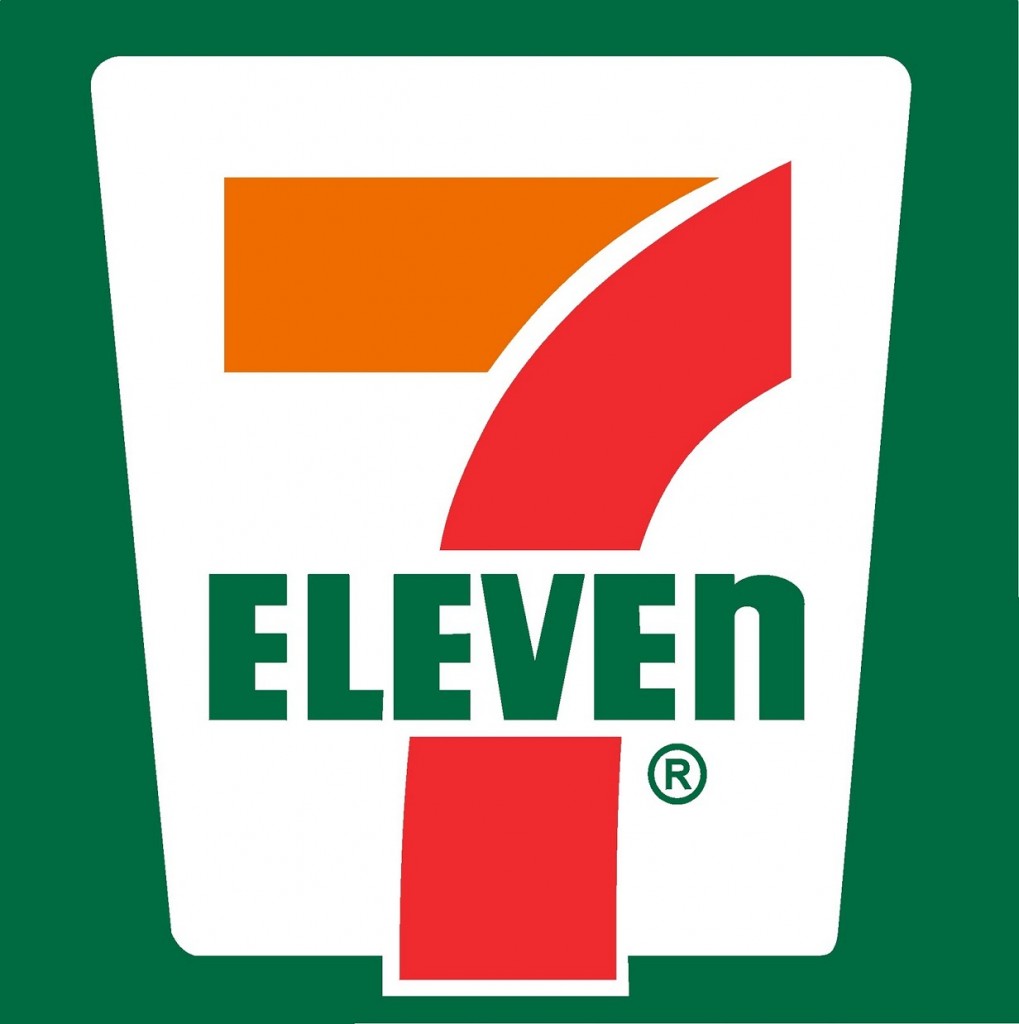
I want to open a 7-Eleven.
Actually, a few of them. But bring the Japanese version to the States. The Japanese bought 7-Eleven (the entire company) about ten years ago.
That’s another story.
We’ll unpack that a bit more on another day, but any reason why 7-Eleven in particular?
I love convenience stores and the concept behind them being an oasis in a busy metropolitan life.
With many of the labels you carry being born, bred, and based there, were there any big challenges you’ve faced since opening Self Edge? For instance: language barriers, cultural differences, or logistical issues?
The main challenge, and something which makes our business difficult to operate even today, is the Japanese Yen and the cost of importing product into the United States.
Our wholesale prices have almost doubled in the past few years and yet our prices have only gone up less than half that. We’re eating the higher cost of the products to keep the prices as low as we can. Everything from taxes to duties to shipping fees and to the price of the Yen has almost doubled in three or four years.
If by chance this becomes an even more serious challenge, do you have any ideas in the back of your mind to ‘pivot’ Self Edge in any way?
Nope, my only back-up plan is 7-Eleven.
Just kidding. We hope that we can continue our current rate of sell-through to sustain our businesses, but if not, there isn’t much we can do about it. All we can hope in the meantime is that the Japanese government does a true intervention and lowers the value of their own currency to increase exports.
Fair enough, although I hope to see the 7-Eleven idea pan out in the near future. Another partnership you’ve built over the past few years is with the guys at 3sixteen in setting up Self Edge NYC. How did this come to be?
I used to have another store before Self Edge called “Turf”, we were one of 3sixteen‘s first accounts in the world about six or seven years ago. I became close friends with Johan Lam, who is Andrew Chen’s (3sixteen‘s founder) partner.
We all got to know each other over the years, and my wife and I thought it’d be a good idea to form a partnership to open Self Edge NY, then Self Edge LA. Andrew is at the NY shop on most days and Johan is at the LA shop most days. It’s been great working with them over the past few years, we couldn’t ask for better partners.
Very cool. We have to ask to about another, more silent colleague of yours – the mustached model in a majority of the denim fit photos. We did a bit of research and found out he is Josh Harris and owns a cocktail consulting company, Bon Vivants. Any background story you can share with us?
He’s recently been brought up quite a bit in Self Edge discussions around the Internet. We met him years ago while he was tending bar at a place in San Francisco called “Pier 23”. One of our best and favorite customers at SESF, Pete Hadden, has been in the same band for almost twenty years and this band plays once a month at Pier 23.
We went to go see them and Josh was bartending, this is before he turned into the rock star he is today. We got to know Josh through the bar and eventually he left to start Bon Vivants. That business took off very quickly, especially once he started to travel around the world winning every cocktail competition he entered. He was named the national champion of multiple styles of spirits and then started doing consulting for high-profile chefs that were opening their own restaurants such as Tyler Florence.
Around this same time Sidney Lo moved to NYC to pursue a full-time photography career and we needed a new model. Josh was already decked out head-to-toe in clothes we sold so we thought it was a good fit. We love his drink making skills and he loves our clothing.
On the more business side of things, how about the many partnerships you have in your denim collaborations? How do you go about in developing these? Is there any behind-the-scenes thought process?
We wait to get to know a brand for a year or two, visit them multiple times in Japan, then wait until a story inspires us. I don’t see the point of a collaboration if it doesn’t tell a story or create something that’s not been done before. The word “collaboration” doesn’t mean what it used to because so much that you see on the market nowadays is basically a private label product or a brand just slapping their name on a product.
With what we do we work with the brand and mill that produces the fabric to create something which we feel is truly special and different than not only what’s in the brand’s current line-up but also different than anything else on the market. As soon as we pick up a new brand (which isn’t often) our customers ask when the collaboration is going to happen, these things take time so it has to happen naturally.
Are there any denim brands you don’t currently carry but wish you did? Non-denim related?
The non-denim brands I like aren’t really brands as much as they’re just people making shirts, I have a soft spot for motorcycle club t-shirts. Like the stuff that Max Schaaf does for his 4Q Conditioning line.
Other brands I’m really into is vintage Sir Guy shirts, the fabrics were so insane on those things and they had that signature slit chest-pocket where you knew it was a Sir Guy shirt from across a room.
Also the original Star of Hollywood polo shirts and button downs were amazing, we’re starting to see some reproductions come out in the past year or so, but the runs are so limited it’s hard to get a hold of even one or two designs per season.
Awesome, I knew you would bring up the Johnny collar-type shirts. How about on the denim front?
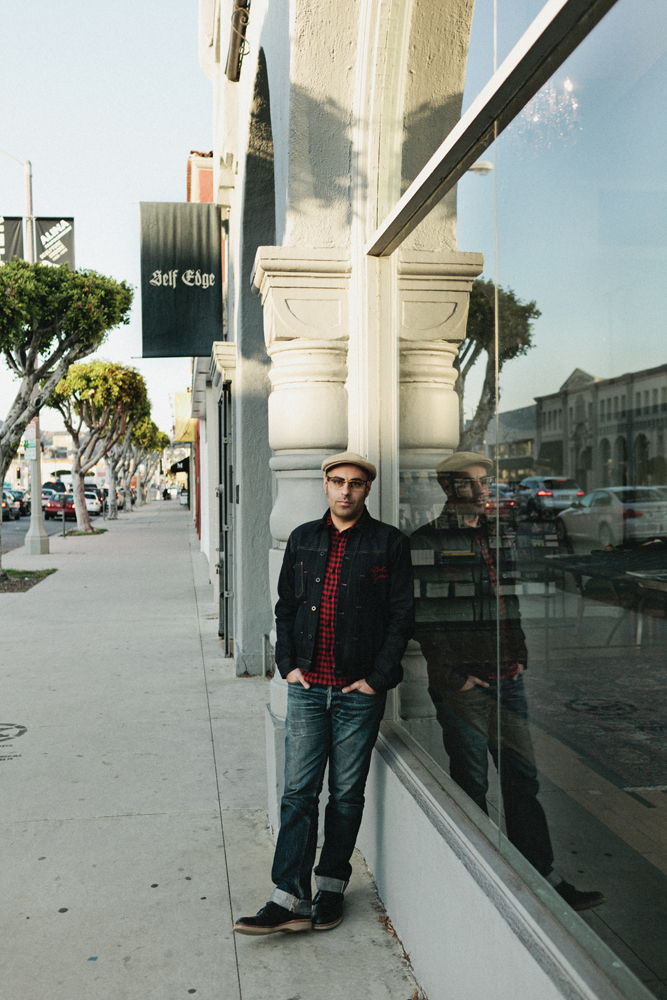
So if you cut out the research and development behind creating a new fabric from scratch you’re cutting out most of what it takes to make a garment.
There are brands out there today, well known ones which we’ve all heard of, which state on their websites and on their marketing materials and tell their retailers that they “worked with the mill” to produce the fabric for an article of clothing which is completely untrue.
This lie is told by so many brands and it’s really unfortunate to have to lie to your customers to get them to buy something. I’ve seen companies which go nearly broke trying to meet a minimum to produce fabric for their collections and spend a year perfecting a certain denim, canvas, or twill. Then there’s brands that buy stock fabric and claim they did all that? It’s not right.
I won’t ask you to name names, but it does explain why certain labels are carried at Self Edge. Would you say this has been your credo in business? Getting to the real core brand or value of a company, partner, etc.?
Yes, exactly. It’s about the purist view of garments. I like to think we’re as transparent as a retailer can possibly be. We communicate openly with our customers via message boards, email, Twitter, and more. It’s not through some marketing person or somebody “that handles the social media”, which is mostly the case once a store gets to the level that we’re at right now.
We want to carry brands that we can build with. It kills me to think about having to drop a brand, which we’ve never really done purely because the product didn’t sell. Brands know that once we start to carry them we’re going to grow with them over time and work with them to bring the best product they can build to the customers.
Diving more into customers and different demographics, in what direction to you think the female raw denim market is moving in? You carry quite a strong selection of women’s garments – do you feel this is a sizeable and growing segment?
We only carry about five women’s models total. They sell well, especially the 99BSP from 3sixteen+. But at the end of the day most women don’t want to wear a heavier weight fabric for jeans. They want stretch and comfort, two things men aren’t nearly concerned with.
There is a small market for raw denim for women, but most will still have stretch in it or be super light in weight. We sell a jean from Flat Head for women and most women can’t believe how uncomfortable it is, it ages better than any other jean available for women, but it’s been harder getting women to care about how their clothing ages than it has been for men.
I believe the Flat Head jean is the only unsanforized raw selvedge jean that has not been soaked or washed available for women in the US.
Any suggestions on how to sway women to get into raw denim? It is a much tougher sell than with men.
I think the basis is getting people to care about how disposable their clothing is, that comes first. Once somebody wants a more pure version of clothing that hasn’t been processed with chemicals, then it’s easier to show them what it’s like to start with a pair of raw denim jeans.
Earlier you touched upon the intersection and influence of industries, such as music and fashion. Is there anything related to these (or similar) spaces that make you shake your head? I’ve read in the past you aren’t the biggest fan of bow ties and khakis…
I don’t understand when an outfit is made up of elements that are contradictory. Wearing work boots with khakis with a military strap Timex. How does this make sense to anybody?
The only place that makes sense is fashion; something I try not to pay too much attention to, or at least not be influenced by. Fashion is disposable, which is probably why I’m into vintage styles – things that stood the test of time and came to define a generation of people. When you look back at these years in 50 years, will people remember the Red Wing and Oxford shirt look?
Also, from a personal standpoint, I like clothing that looks rough. I’m not very interested in wearing boat shoes, khakis, and a Brooks Brothers looking shirt as if I belong on a yacht. I’d rather look like I belong in a hot rod or motorcycle or I’m just getting wasted at the dive bar.
Having said that, where do you see the men’s fashion world heading in 2012 and beyond? Specifically, how about for raw denim and Self Edge? Do you sense any major transitions or changes?
I’m hoping for less disposable styles that are promoted heavily by bloggers then dropped within a season or two. I’d like to see styles that we go deeper into.
The heritage thing is bothersome because there is this illusion that what you’re buying is made better than something made in China or India or Mexico, when in reality there is no direct comparison.
There are terrible factories in those countries but there are also great factories there too. American made is great, it supports our local economy and gives local residents jobs but equating that with quality doesn’t make much sense.
When Japan comes into the picture things get even more complicated. Japan is one of the only places in the world where the factory workers are locals, born and raised in Japan, bringing a certain work ethic with them.
Don’t think for a second that garment factories in America, Italy, or France actually employ citizens from those countries.
I’d like to see a bigger emphasis on quality, and not just where the garment was produced.
Where do we start?
Educating people on the differences in production, materials, and factory conditions.
I’d love for there to be a side by side photo gallery comparing the insides of factories from the US, Mexico, India, China, and Japan. Even throw in Italy and France.
We start with the beginning, the mills, then the cut and sew factories. You don’t need to go much further to understand how and why something looks and feels the way it does and why it’s priced at what it’s priced at.
Thanks again, Kiya, for chatting with us – if you have any additional questions or comments, feel free to leave a note below!
Stay Raw!
